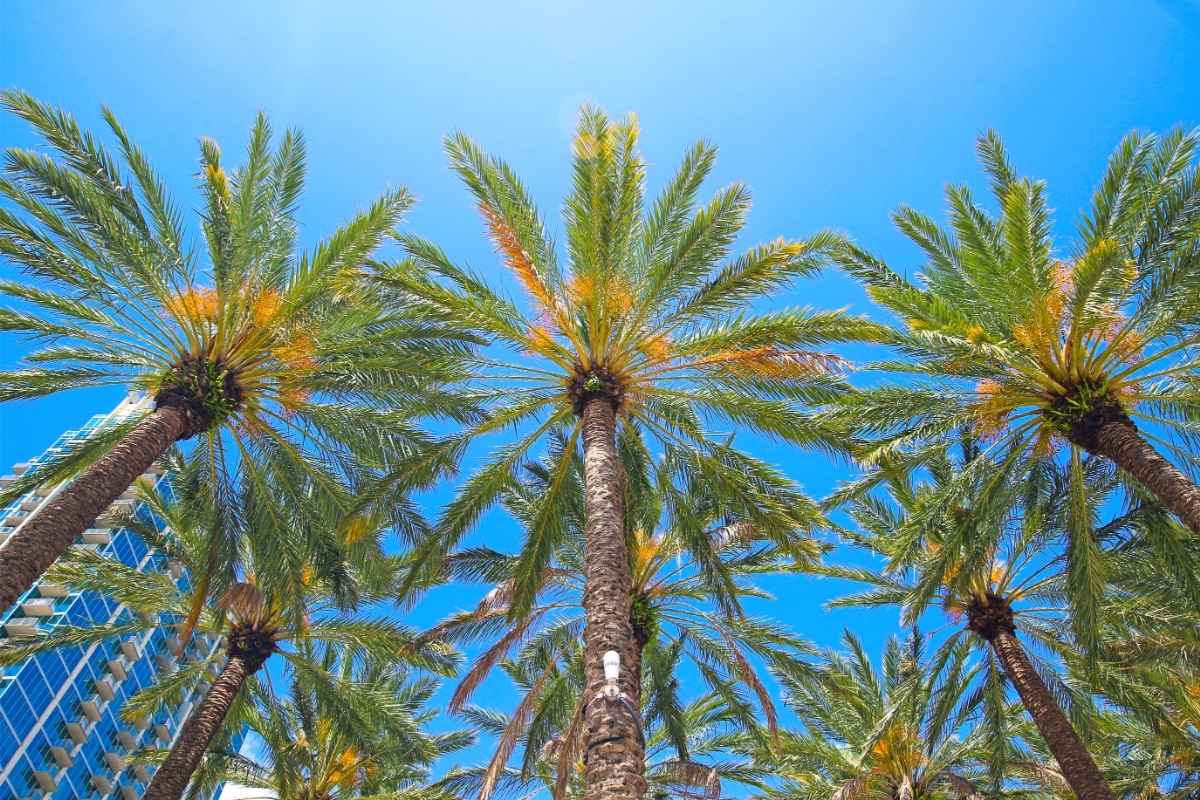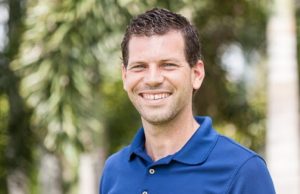
No tree says Florida like the palm tree, especially the state tree, the sabal palm. But lethal bronzing disease threatens dozens of palm tree species across the state, including the sabal palm. And the organism causing it is on the move. Lethal bronzing disease can kill a tree in less than a year from the time the phytoplasma first infects it, and if not checked, it will spread to any other palm trees you have, or to your neighbor’s trees. Here’s how to save your Tampa area palms trees from lethal bronzing.
What to Look for
Lethal bronzing’s first noticeable symptom, according to the University of Florida IFAS Extension, is premature fruit drop. From there, the tree’s oldest leaves will turn brown. Finally, the central spear leaf will collapse, a symptom that the heart of the palm has died. Once that happens, there’s no chance to save the tree. All this can take less than a year — and in the meantime, the organism that causes it will have jumped to new, unaffected trees.

“It’s on the move within the state for sure, but it seems to be most prevalent in the central part of the state,” said Dr. Brian Bahder, an assistant professor in the entomology department at the University of Florida’s Fort Lauderdale Research and Education Center. Dr. Bahder is Florida’s foremost researcher on lethal bronzing. “At this point, the economic loss — we don’t have an exact dollar value, but I can say it’s easily in the millions.”
The Culprit
The pest behind lethal bronzing disease has an unremarkable name: 16SrIV-D phytoplasma. A phytoplasma is a bacterium without a cell wall. So far, this one has killed palm trees in Florida, Louisiana, and Texas. Dr. Bahder believes an insect transmits the bacteria from tree to tree. Initially, the disease’s first U.S. name was Texas Phoenix Palm Decline because it first affected trees in Texas in the Phoenix genus of palms. It got renamed when it spread beyond Texas and to more palm species.
It first spread in Florida along the same path as 2005’s immensely powerful Hurricane Wilma. That leads scientists to speculate it may have hitchhiked to Florida in the saliva glands of some rugged Wilma-tossed insects. Lethal bronzing hit Tampa Bay in 2006.
What to Do
If you suspect lethal bronzing disease, don’t procrastinate. The longer the disease goes, the worse it gets. It takes just months for a tree to go from newly infected to dead. First, you have to test it to confirm lethal bronzing disease is the culprit. Contact the University of Florida IFAS Extension office for your county agent, prepare a trunk sample and send it in. That test will either be done at Dr. Bahder’s lab, or a lab in Gainesville.
“Once a palm shows symptoms and tests positive, there’s nothing to do. The best thing to do is to remove it immediately to try and prevent further spread of the disease to nearby, healthy palms,” said Bahder. He encourages testing and sampling, so infected trees can be destroyed immediately. But there is a glimmer of hope — an antibiotic. “If the palm tests negative and looks healthy, we’re fine with recommending using the antibiotic (oxytetracycline HCI) as a preventive treatment,” he said. It remains to be seen if the antibiotic might be able to cure the tree. “We’re actively doing research to try and determine if there’s an amount of antibiotic that we can use that will reverse symptoms once a palm has become infected.”
Best Practices
The best practice right now is to test your palms for lethal bronzing disease, even if they look healthy. Those that test positive and show symptoms should be removed right away. Those testing negative can receive the drug, which could save them. But the antibiotics are just a bandage on a problem that has spread to 33 Florida counties since 2006. The solution comes not at the hands of homeowners, but tree care professionals, growers, and researchers.
“We’re trying simultaneously to stop the spread of the disease in the nursery, which is where most of it, I believe, is occurring,” said Dr. Bahder. “ I’m hoping if we can control the vector in the nursery and slow the spread there, that will have a trickle-down effect into the urban environment.”
The goal is fewer infections and more healthy palm trees swaying in the Tampa Bay breeze.
Dr. Brian Bahder is an assistant professor of entomology at UF/IFAS (University of Florida/Institute of Food and Agricultural Sciences). He specializes in insect vector ecology, and his research interests include the epidemiology of phytoplasmas infecting palms and other tropical ornamental plants.
Main Image Credit: TriggerPhoto / Canva Pro / License